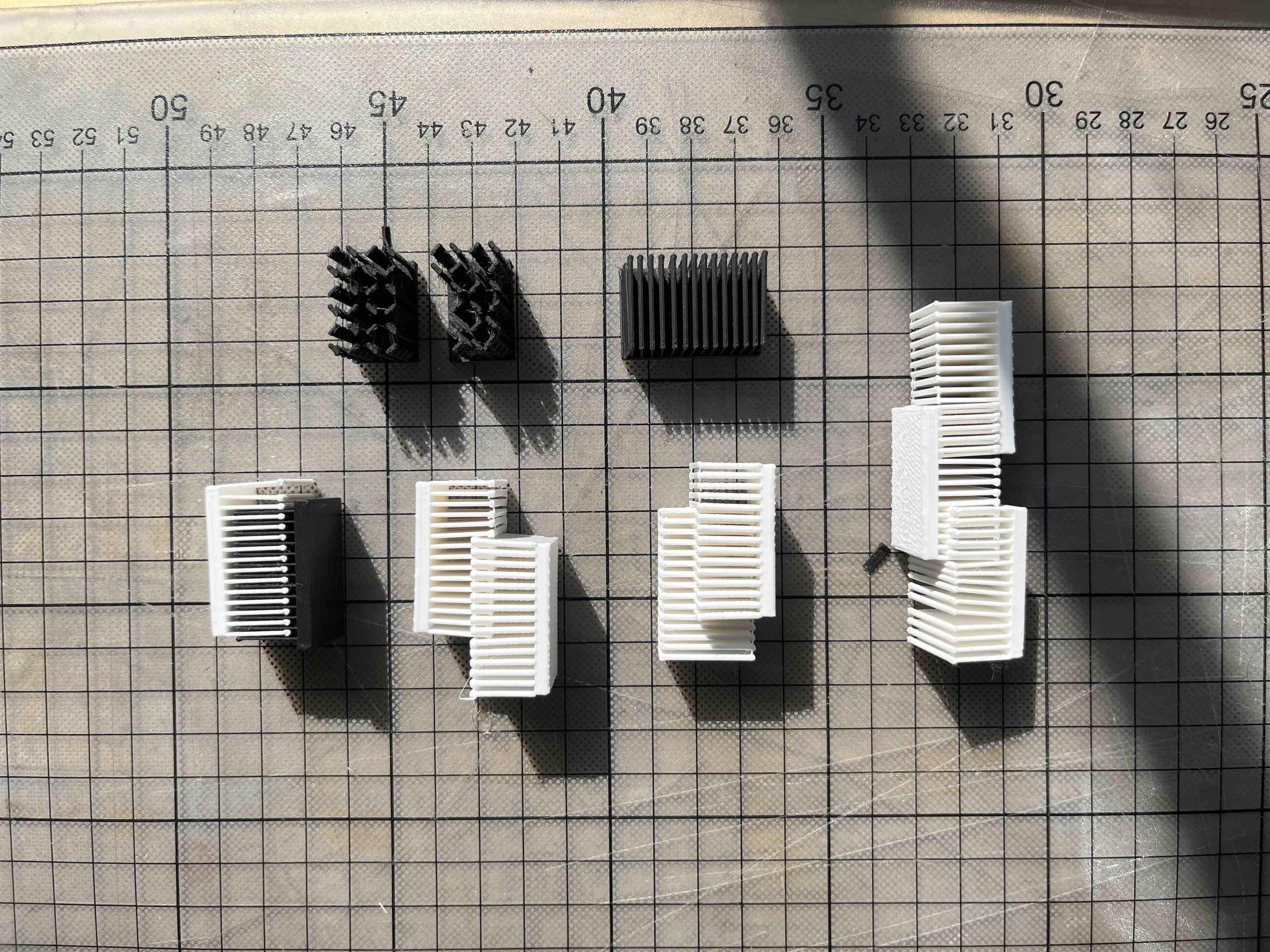Week 03 ~ 3D Printing and Scanning
Scanning my bike rack
The bike rack in front of our house doesn't work so well:
it's built along a slope, so most of the wheels don't actually fit into the rack and it lacks rain cover. I thought it could be interesting to scan it
to explore some alternatives in CAD.
I downloaded an app called Pix4D which has a 14 day trial period onto my iPhone (pre LiDAR).
The app is easy to use, with occasional feedback telling you to move slowly and a count showing
the amount of images that have been captured. I walked around the bike rack for about a minute (the app captured 83 'geolocated' photos).
Processed pointcloud of the bike rack.
Sketching a rain-cover in Blender.
Bike-stand pointcloud - Pix4D gives options to measure distances in the model. I was surprised at the level of detail from a quick scan.
Scanning a tree on my street (screenshots from Pix4D cloud).
After the Pix4D cloud had finished with the data conversion, I was able to download
a mesh file (.obj), which I was then able to import into Blender. The file also came with an associated .mtl texture file.
For cleaning up the imported photogrammetry mesh in Blender, I found this video tutorial quite helpful.
Next time, I might try just taking the photos myself and using Meshroom + Blender as described in this video tutorial.
PLA-velcro?
Group assignment ~ we launched two of the test prints, one to test overhangs and the other to test wall-thickness.
The wall thickness one turned out very well and gave me confidence that using PLA to print my velcro test pieces at 0.5 mm thickness could work.
The overhang print failed and it seemed there might have been an issue with the printer temperature regulation on the older Syndoh printer
(in the slicer the temperature settings looked fine).
Syndoh printer, wall thickness print, failed overhang test
(due to a problem with the temperature regulation in the printer?)
Over the summer I was working on a toolkit of modular end-effectors for a UR-10 robot arm. The tools attach magnetically
to the toolhead, but I have been wondering if the design could be simplified by having an attachment that is purely friction based. To explore this concept further, I wanted to see
if I could print velcro-like surfaces.
Tests with wavey inter-locking plates printed over the summer.
CAD concepts of velcro like surfaces; Prusa slicer side view showing the 0.5mm bristles.
Test prints out of PLA on the Prusa Mini (0.4mm nozzle), the thickness of the bristles is 0.5mm.
The cylindrical ends were challenging to connect into each other head-on; but inserting at a slight angle worked well.
For the cylindrical ends I tested different diameters (1.4 and 1.2mm), settling on a smaller diameter.
I was pleasantly surprised by how durable the wide bristle tests were. The more complex (and velcro like)
grid however was very brittle (they were much slimmer, so it makes sense that they were less durable).
 Connecting the wide bristle pieces at 90 degrees - seemed to make for a good joint.
Connecting the wide bristle pieces at 90 degrees - seemed to make for a good joint.
 Test pieces, 0.5-0.6 mm thickness, 1.2-1.5mm diameter tips. The square grids did not work well due to the reduced
strength of the slimmer bristles - however, I would like to explore this space further, as the current bristles only allow for things to attach in a single direction.
I would also like to explore possibilities of actuating the bristles, e.g. mechanisms for opening/releasing and closing/adhering the bristles.
Test pieces, 0.5-0.6 mm thickness, 1.2-1.5mm diameter tips. The square grids did not work well due to the reduced
strength of the slimmer bristles - however, I would like to explore this space further, as the current bristles only allow for things to attach in a single direction.
I would also like to explore possibilities of actuating the bristles, e.g. mechanisms for opening/releasing and closing/adhering the bristles.
Playing around with these 'velcro' pieces has made me reconsider what I might want to do for my final project. It would be very interesting to explore
having actuated velcro-like surfaces that could be programmed to adhere and release on command, i.e. surfaces with programmable textures.
Files: wide_bristles_0p5mm.stl ; slim_bristle_grid_0p5mm.stl
; wide_bristles_shorter_0p5mm.stl ; slim_bristle_grid_with_barbs_0p5mm.stl